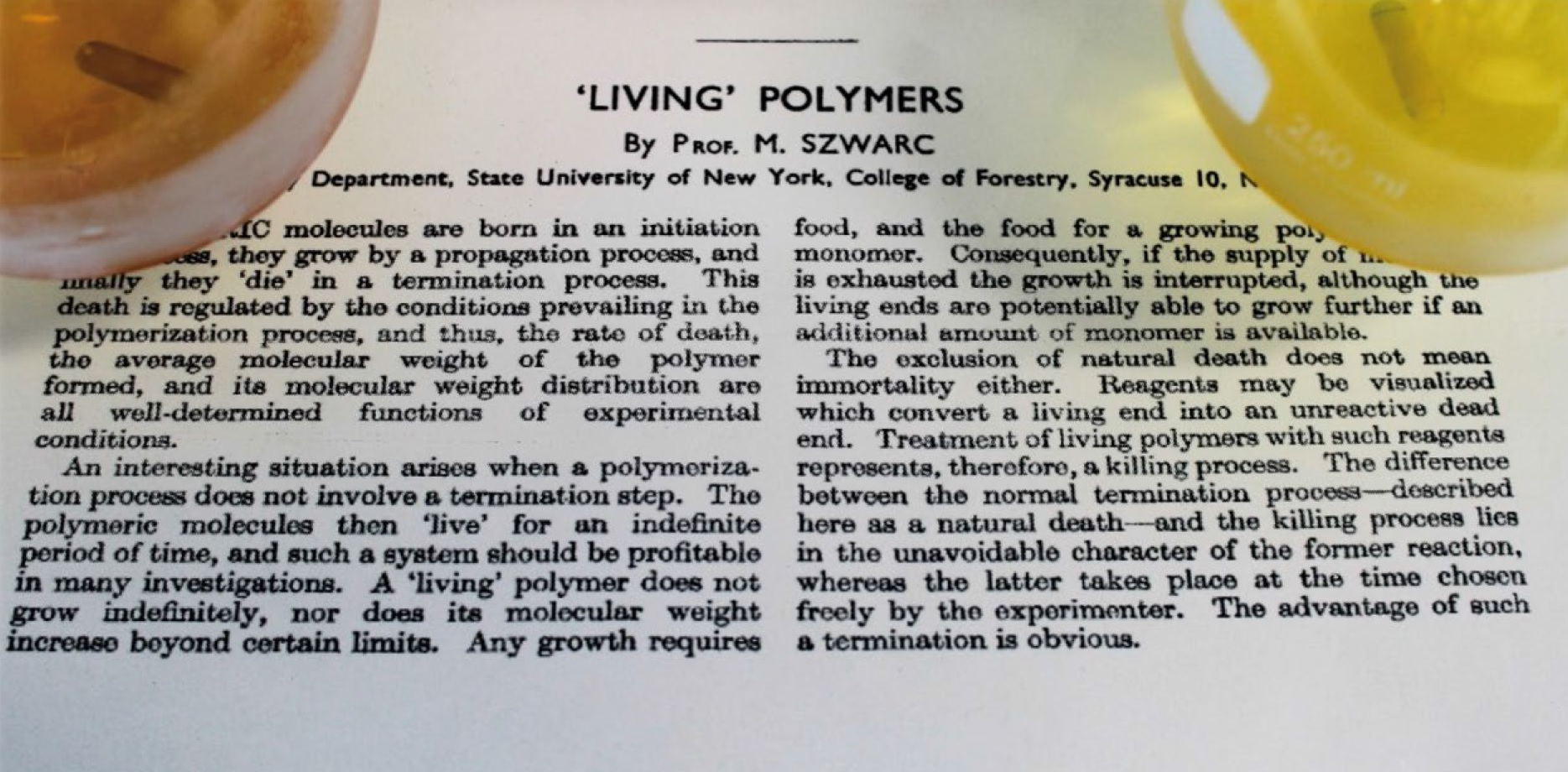|
M. Steube, T. Johann, M. Plank, S. Tjaberings, A. H. Gröschel, M. Gallei, H. Frey and A. H.E. Müller, Macromolecules 2019, 52 (23), 9299-9310
|
The living anionic copolymerization of isoprene (I) and styrene (S) can afford a variety of different polymer microstructures that strongly depend on experimental parameters such as solvent, counterion, and temperature. In this work, in situ near-infrared (NIR) spectroscopy was employed as a versatile and fast method to track the conversion of the individual monomers in a nonpolar (cyclohexane, CyH) and a coordinative solvent mixture (CyH with 1.5%vol tetrahydrofuran (THF)). For the first time, in situ monitoring of the copolymerization is performed by deriving the individual monomer signals from the superimposed spectra. |
|
D. Leibig, J. Morsbach, E. Grune, J. Herzberger, A. H.E. Müller, H. Frey, Chemie in unserer Zeit 2017, 51, 254–263 |
Vor sechzig Jahren entdeckte Michael Szwarc die lebende anionische Polymerisation. Trotz ihrer hohen synthetischen Anforderungen ist sie bis heute die präziseste Methode zur Herstellung von wohldefinierten Polymeren und inspirierte zahlreiche neue Polymerisationsmethoden. Maßgeschneiderte Blockcopolymere finden sich in den verschiedensten Anwendungen von High‐End‐Verpackungsmaterialien über die Elektronik bis hin zu Nanomedizin. |


